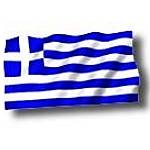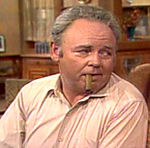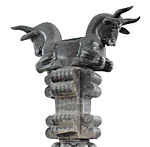CHAPTER VIII - Tarmac & grass display base constructionI found nice idea to place the Bö-102 Helitrainer on a display base, simulating a concrete ground area. The idea was to establish the picture of an abandoned small airfield in Vlotho, where the Helitrainer used to rest for decades till found and finally donated to the Hubschraubermuseum helicopter museum in Bückeburg, Germany. The museum workshop team, managed to restore it and display it as on of these experimental helicopter training devices. From my local store, I bought a 20x30cm polished wooden picture frame.

I add some grams of plaster powder and few drops of water with a syringe into a soft rubber cup to make the right mixture. Materials like plaster, start as a dry powder that is mixed with water to form a paste which liberates heat and then hardens. Unlike mortar and cement, plaster remains quite soft after drying and this characteristic make plaster suitable for the job. Keep in mind that adding salt into wet plaster mixture, reduce the plaster's hardening time and adding vinegar into wet plaster mixture, extend the plaster's hardening time. When the first layer of thinned plaster applied on the picture frame, a glass were pushed against the plaster to form a flat basic strong cast. The basic idea, is to produce a totally flat cast and later add some detail or apply extra stuff where is needed.





I left it few hours to get harden in order to be sure that the cast wouldn't break when I would try to cut it into desired shape. Meanwhile, I took the soft rubber cup which I used to make the plaster mixture, squized it to break the last hardened plaster left inside, so it would be easier for me to clean it afterwards and prepare it for any future mix. That's the reason this soft rubber cup were used for.


As soon as the plaster cast got harden, cut into shape and the concrete plaques were lined with a scriber, I used my airbrush to paint it. After the polished wooden frame was covered with masking tape, three different acrylic paint layers were applied on the plaster surface. First, mat black colour covered the area and then a light grey applied with airbrush, spraying in almost zero degrees angle, to let the darker areas between the concrete plaques remain naturally dark. The corner was paint with earth tones and as soon as the acrylic colours dried, I tried some drybrushing on selected spots using sand tones.

As for he grass & plants, I used different colors of static grass from my local hobby shop, empty them into a plastic box and make a mixture.


Water based white glue for wood, which becomes transparent when it dries, is just the right for the job. So, I opened a 500gr canister bought for 2€ only, pick a small quantity, add just few drops of water with a syringe into a small metal container to make the right mixture and finally I applied on the desired areas to be filled with grass & plants, using a wet brush. Because the mixture is enriched with water based glue, it is easy to correct possible mistakes.





As soon as the result was OK, I sprayed over with Humbrol enamel mat coat, to seal the paint and grass, so far. I left it overnight and as soon as the enamel mat coat dried, I add very few light & dust effects with chalk dust and pigments.















































































